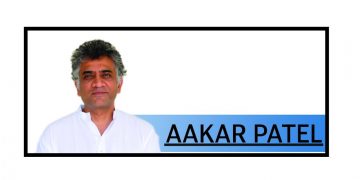The Centre finally bit the bullet by reducing the petroleum prices by a cumulative Rs 2.50 per litre. Finance Minister Arun Jaitley said the cut will be affected through slashing of excise duty to the tune of Rs 1.50 per litre, while the oil marketing companies (OMCs) will absorb the impact to the tune of Re 1. The measure, though very late, has been welcomed by all and sundry. Amid the relentless rise in fuel rates over last six months, a cut in excise rate was long in order. Transport fuel prices have been on a daily record-breaking upward movement with petrol inching closer to Rs 84 in Delhi and having already crossed the Rs 91 a litre mark in Mumbai. In Odisha, petrol rate has been hovering over `80, while diesel sells at Rs 77 per litre. Brent crude oil has hit USD 86 per barrel Wednesday, recording its highest level in four years. After the latest cut, the excise duty levied on normal petrol will be Rs 17.98, down from Rs 19.48, while on branded petrol it will be Rs 18.16, down from Rs 20.66. Similarly for high speed diesel, the excise duty will be Rs 13.83, down from Rs 15.33, and for branded high-speed diesel it will be Rs 16.19, down from Rs 17.69. The government will bear a total revenue loss of Rs 10,500 crore on account of the excise cut in the remaining part of the current fiscal, which amounts to 0.05 per cent of the fiscal deficit.
The Centre has urged the state governments to reduce the VAT on fuel by a similar amount, if not more. The call will be hard to ignore by the state governments, especially those who have been very vocal in demanding a cut in excise rate by the Centre. VAT on petrol and diesel varies from state to state. While the Centre receives fixed revenue from excise duty on oil, state governments impose ad valorem VAT in percentage terms, which go up as high as 31 per cent in some states. As the tax base on account of VAT on fuel for state governments has expanded over the last few quarters resulting from the surge in fuel prices, the state governments may not find it too hard to reciprocate with the Centre. As soon as the Centre announced the reduction in excise rates, some state governments such as Maharashtra, Jharkhand, Gujarat, Tripura, Chhattisgarh and Uttar Pradesh – all BJP-ruled states – have cut fuel prices by Rs 2.50 per litre. Last time, when the NDA government had cut the excise rate by Rs 2 per litre in 2017, it was the NDA-rules states that made the VAT reductions. Last month, the governments of Karnataka, West Bengal, Rajasthan and Andhra Pradesh cut taxes on petrol and diesel. The Odisha government is also likely to cut the VAT on fuel, as it is yet to do this.
However, a reduction of price by Rs 2.50 – Rs 5 per litre is not a permanent solution for the oil problem. If the crude price continues to go up and the rupee falls, the measure will have only a limited impact. The critical part, therefore, is how long will it take for the rupee to stabilize and at what level? Post November, when the Iran sanctions kick in, where will the oil price go? The monetary policy committee of the RBI, which is sitting now, should refrain from hiking the rates. There are enough signs for the central bank to increase the rates. The fast weakening of rupee, rising crude prices and a larger MSP for the farmers may combine to exert pressure on the inflation going forward. Additionally, increasing global trade curbs and tariff hikes can also impact further inflationary pressure. But the RBI should maintain the statuesque now given that it has already increased the rate by a cumulative 50 basis points in last two review meetings over the past four months. Moreover, the CPI inflation is still within its comfort level of below 4 per cent. Any increase in repo rate can negate the small comfort the excise cut in fuel price has rendered to the consumers.
New Axis Powers
Appeasement or tacit approval of invasion and capture of foreign land helped the rise of Adolf Hitler and the formation...
Read moreDetails





































